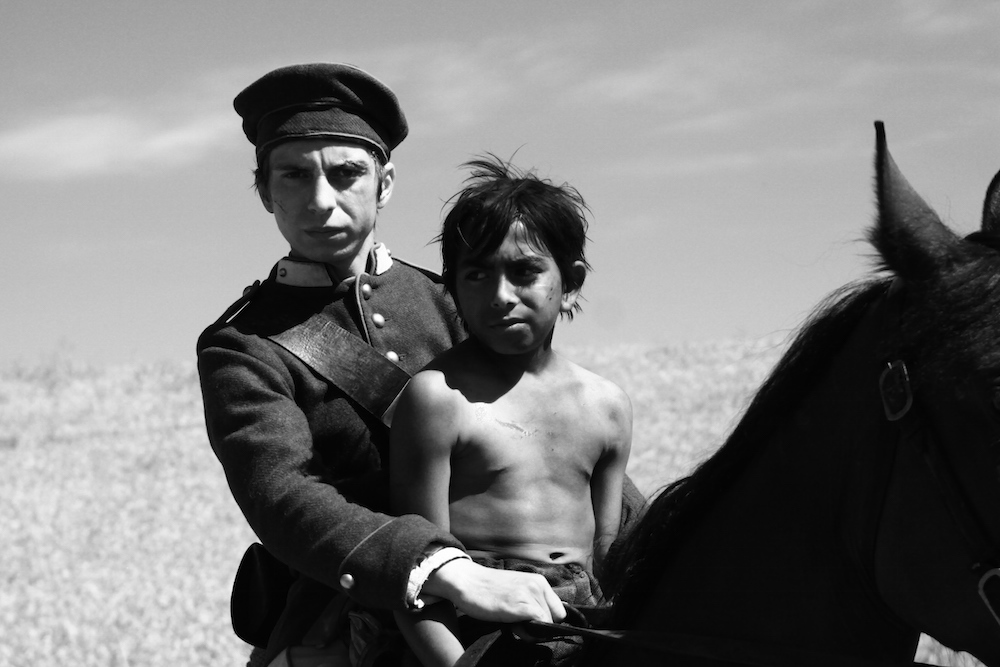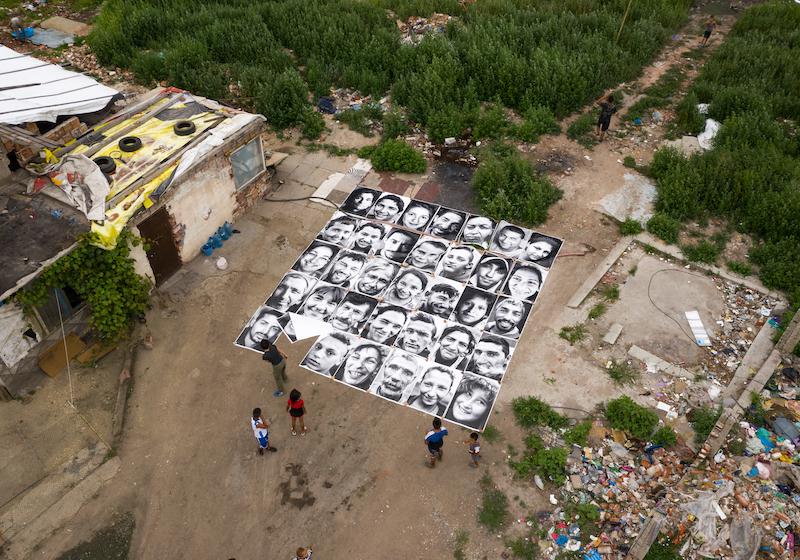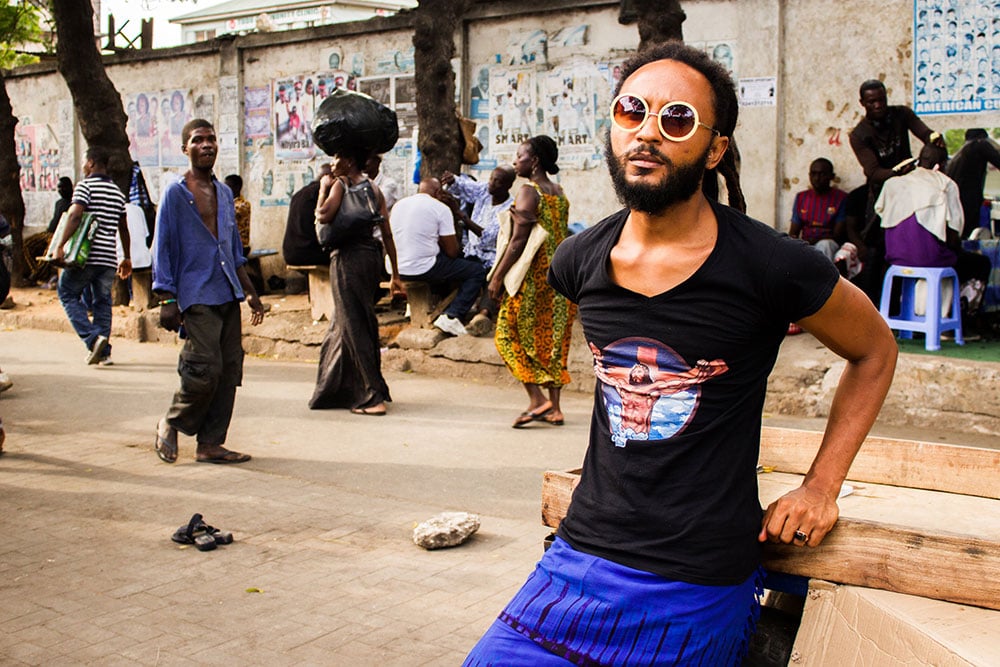The rise and fall of ‘Manele’, the Balkan beat genre that took Romania by storm
From its Roma roots to hipster DJs, this is the story of how a music genre divided Romania
“We live life like Sultans/ Like Suleiman we sprawl/ How wonderful our life passes,/ We have no worries at all,” sings Adrian Minune on his track, “We Live Like Sultans”. Rising to fame as Adrian Copilul Minune (or Adrian the Wonder Child, because he started his career as a child singer), Minune is a star of Romanian manele: a Balkan beat genre with Roma roots.
Characterised by Turkish and Arabic influences and infamous for its connections with the gangsta underworld, manele paints an aspirational, money-making world where heroes get rich quick on their streetwise smarts, to be loved by women and envied by their enemies. “Gypsies from the gypsy-hood are jealous I’ve got money,” Minune sings in another hit.
Minune might be a star, but both him and other manele singers are navigating choppy cultural seas. Once one of Romania’s most widely-loved musical genres, manele is now quietly blacklisted from major TV and radio stations. Appearances of manele at major festivals or nightclubs has fractured Romanian society into several fronts. At its heart is a Romania coming to terms with itself and its identity.
Deemed illegal under the socialist regime, manele slowly gained ground after the collapse of communism in the 1990s. By the early 00s, the sound of manele was everywhere in Romania — pumping on full volume from cars, clubs, bars, and markets, on beaches and by picnic areas. Manele singers were frequently played on the radio and invited to TV shows.
The Roma community had not been recognised as a minority group under communism. The state strove to create a single, uniform nationalist-socialist culture rather than encourage multiculturalism. Both the more traditional Roma music genre lautareasca — which involves big bands of Roma musicians playing lute and brass instruments — and the more modern manele, were forbidden and went underground. Modern manele were born in the 1980s, mixing more Turkish and Arabic influences from the second half of the 19th century, with electric guitar, synthesisers and underworld themes.
With roots that spread back to the Middle Ages, lautareasca did not spark the same kind of widespread national devotion — or controversy — when it reappeared on the Romanian music scene. The genre is a favourite among jazz lovers rather than the mainstream. Manele, on the other hand, “dances with free expression”, says Aurel Ionita, a former member of world-famous lautareasca band Taraf de Haïdouks, and now leader of Balkan beat pioneers Mahala Rai Banda.
It was no surprise that manele spiralled in the years after the end of communism, when audiences were still desperate for real honesty. And, while Romanian pop stars only sang about love and sex, manele embraced the local context it was made in, says Romanian author Adrian Schiop, who published a book on the genre. He argues that manele gained traction because, like hip hop, it actively engaged with the socio-economic pressures Romanians were struggling with throughout the era.
Not everyone, however, was so enamoured. During manele’s 00s heyday, much of the cultural elite looked down on the genre. This was partly due to the nouveau-riche values that manele singers embraced, but racist undertones also often poisoned their speech. As one literary critic espoused, manele represented not the majority, but rather a “loud minority”.
“Manele has been presented badly in Romania. It’s associated with the criminal world and people with a low level of education,” says Aurel Ionita. “That is completely wrong. Manele is sung by very good musicians and singers, and everything is 100 per cent live.” But musical snobbery and an obsession with everything Western soon also inspired rock and hip hop musicians and their audiences to also look down upon manele, compounding its bad reputation.
Or at least that was until the hipsters arrived. Over the past few years, after manele went firmly out of fashion, left-leaning urbanite groups tried to reclaim the genre. Some threw street parties and themed club nights to celebrate the music and its Roma, working-class roots. But the revival was not well-received by everyone.
Last summer, at one of Romania’s biggest pop and electronic music festivals, Neversea, Swedish DJ Salvatore Ganacci announced he would be playing a track by one of his favourite musicians: Adrian Minune. The crowd of millenials began singing along to the former hit “This Is “What My Days Are Like” (“Asa sunt zilele mele” in Romanian), creating a viral video storm. Unlike the newer manele which boast about success, “This Is What My Days Are Like” is a sad reflection on ageing, bad luck, and gossip — but it too paints an image of the “mean world” against the individual. Adrian Minune said that seeing the clip was “an important moment in his life”. Many festival attendees, however, complained that they hadn’t shelled out expensive festival tickets to listen to mere manele. Festival organisers attempted to downplay Ganacci’s gesture as an attempt to “shock”, typical of his “non-conformist” style.
Two weeks later, Estonian rapper Tommy Cash played the same song at the alternative music festival Electric Castle near Cluj. The organisers promptly thanked Cash for his “last ever performance at Electric Castle” on their Facebook page.
But it’s not just the music scene which is pushing back. Conservative groups and politicians are also determined to stop manele’s return. The mayor of the city of Timişoara, Nicolae Robu, officially banned manele from public celebrations on Romania’s National Day of 1 December last year, claiming that he was “disturbed” by the genre’s lyrics, and “the behaviour of those who participate in this act as audience or musician”. He was roundly condemned by civil rights groups.
“While Romanian pop stars only sang about love and sex, manele embraced the local context it was made in”
Much conservative criticism of manele is rooted in opposition to its hyper-sexualised videos and lyrics. Indeed, many manele clips feature male musicians surrounded by young, scantily-clad women, just as in many Western hip-hop videos.
But a lot of the moral panic lies in manele’s supposed glamourisation of the criminal underworld. Aside from lyrics which seem to praise the greyer sides of the law, some artists also take money to compose songs about the wealthy and powerful, much as the European nobility that hired grand masters to paint them sympathetically in the past. Despite paying well, these associations are not always favourable for the musicians in question. Adrian Minune’s 2014 song “Sydonia” was commissioned by controversial businessman Fabian Marin for his wife, Sydonia Marin, while she was in prison for trying to bribe a judge with €45,000 and a luxury car. The bribe was intended to ensure Fabian would escape a jail sentence in his trials for violence, loansharking, and blackmail.
But those attempting to bring manele back into the mainstream are also causing controversy. While some underground artists are taking manele into a new electronic realm, building upon their oriental musical inflections and lyrics yet rejecting their mafioso and consumerist discourse, others have less informed approaches.
At the beginning of March this year, a group of feminist Roma activists clashed with a DJ playing manele at a Romanian nightclub. The women defined the genre as part of Roma culture and accused the DJ of cultural appropriation on their social media accounts. “If you’re a DJ, play any music you want, but don’t play manele if you don’t understand their history and you don’t have an anti-racist discourse,” activist Georgiana Aldessa wrote on Facebook. The DJ, in turn, claimed that manele constituted music made by individual artists, which he played in the same way as the works of any other musician. Even this is a thorny issue. Manele singers call their genre “gypsy music”, but many others disagree, seeing lautareasca as authentic traditional Roma music and calling manele a modern genre. Moreover, manele singers have also embraced a more individualist cultural and economic model than lautareasca musicians, who place the whole band — the collective rather than one lead singer — at the forefront.
Ultimately, manele fractures Romanian opinion and voices because it reflects the multi-faceted society that made it possible. “We have a saying amongst lautari — You sing well, you eat well; you sing badly, you die of hunger,” Ionita from Mahala Rai Banda explains. “Music changes and evolves with the system in which we live and work.” Beyond exceptions on either end of the cultural and political spectrum, many of the values promoted by manele are widely shared in Romania: whether that is the importance of family, or making money, or the challenges and opportunities of capitalism.
For manele’s critics then, perhaps it’s time to focus their energies towards analysing and improving the cultural, economic, and political context that created the genre’s get-rich values they so disapprove of. In the meantime, it’s time to dance and let dance — while acknowledging and paying dues to the complicated history of both manele and lautareasca.


